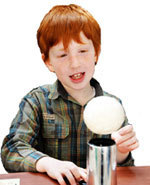From Kindergarten through Grade 6, a Common Core focus is for students to master 2-Dimensional shapes. During grades 1-3, this is supported by students honing in on reasoning with shapes and their...
Research and publish the best content.
Get Started for FREE
Sign up with Facebook Sign up with X
I don't have a Facebook or a X account
Already have an account: Login
Creating new learning environments in math by applying UDL principles may just close the achievement gap in the US!
Curated by
Kathleen McClaskey
 Your new post is loading... Your new post is loading...
 Your new post is loading... Your new post is loading...
|
|













The author offers suggestions on how you can use technology and the arts to help learners understand and master 2-Dimensional shapes, a Common Core focus in geometry for K to Grade 6.
"These arts and technology based activities could be used for your multiple means of engagement, representation, or expression, depending on where/how they are used throughout a unit. Many can be used as whole-class activities, continued small-group practice, or even for assessment purposes following a sequence of lessons. These fit Universal Design for Learning nicely when considering geometry goals because there are multiple ways for learners to absorb and process information as well as convey their understanding. HOW students explore the concepts to be mastered is the key- not just giving them the WHAT."